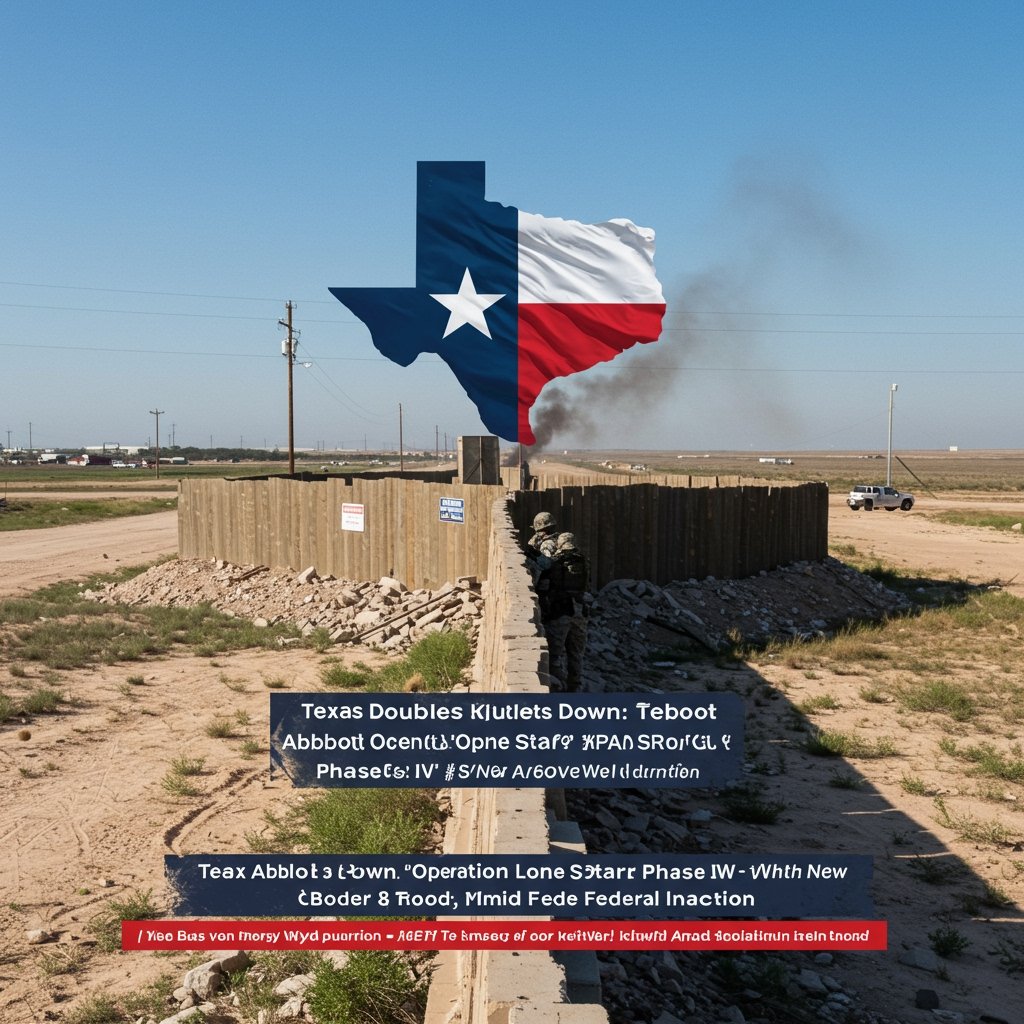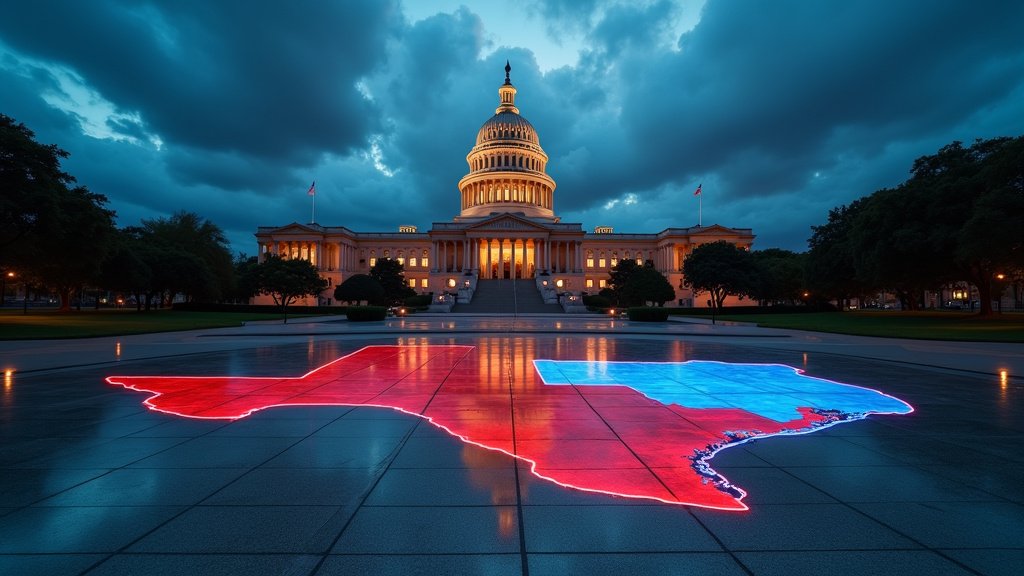Texas Escalates Border Security with “Operation Lone Star Phase IV”
Eagle Pass, Texas – In a significant escalation of the state’s ongoing efforts to secure its border, Governor Greg Abbott today unveiled the next phase of Operation Lone Star, dubbed “Phase IV.” Speaking at a press conference held in Eagle Pass, a city that has become a focal point for migration challenges along the Texas-Mexico border, Governor Abbott detailed a substantial expansion of state resources and initiatives aimed at deterring illegal crossings, combating drug trafficking, and disrupting cartel operations. The announcement underscores the state’s resolve to independently bolster border security measures, citing what state officials characterize as persistent and increased inaction from the U.S. federal government in managing the influx of individuals crossing the southern border.
Key Components of Phase IV: Troops and Barrier Expansion
The newly announced “Operation Lone Star Phase IV” outlines a two-pronged strategy focusing on both manpower and physical infrastructure. A central element of the plan involves the deployment of an additional 1,500 National Guard troops to the Texas border region. This surge in personnel is intended to enhance surveillance capabilities, interdiction efforts, and support for state law enforcement partners already operating under the Operation Lone Star umbrella. These troops will be tasked with augmenting the presence of state troopers and other personnel along critical sections of the border, aimed at increasing the rate of apprehensions and turnbacks of individuals attempting to cross unlawfully. The specific areas of deployment for this new contingent of troops were not immediately detailed, but they are expected to reinforce sectors experiencing high levels of illegal activity.
Complementing the increase in personnel, Phase IV also includes a commitment to expanding the physical barrier along the border. Governor Abbott announced plans for the construction of 20 miles of new state-funded border barrier. This new section of barrier is strategically planned to be built near Laredo, Texas. Laredo, a major port of entry and a significant corridor for both legitimate trade and illicit trafficking, represents another critical area along the expansive Texas border requiring enhanced security measures. The timeline provided for the completion of this 20-mile segment is ambitious, targeting completion by Q3 2025. This state-funded construction initiative reflects Texas’s approach to building its own barrier infrastructure, distinct from any federally funded border wall projects. The specifics regarding the design and materials of this new barrier segment were not elaborated upon during the press conference, but previous state barrier projects have included various forms of steel panel fencing and concrete barriers.
Rationale: Addressing Influx and Citing Federal Inaction
Governor Abbott articulated the rationale behind launching this significant new phase of Operation Lone Star, stating emphatically that these measures are necessary to address the continued influx of undocumented immigrants and drug smuggling plaguing communities along the border and throughout the state. He characterized the situation as a crisis demanding robust and immediate action from the state level. A core component of his justification centered on the perceived lack of adequate response from the federal government. Governor Abbott explicitly cited increased federal inaction as a primary driver for Texas taking further unilateral steps. This claim of federal inaction is a recurring theme from Texas state officials, who argue that federal immigration policies and enforcement priorities have effectively incentivized illegal crossings and overwhelmed state and local resources.
To underscore the necessity of the state’s expanded efforts, Governor Abbott referenced a specific, recent event. He highlighted an incident that occurred near Del Rio on February 26, which involved a large group crossing the border. While details of this specific incident were not extensively detailed in the context of the announcement, it was presented as a tangible example of the scale and frequency of mass crossings that the state is grappling with and that, in the view of state officials, are not being adequately addressed by federal authorities. Del Rio, like Eagle Pass and Laredo, is situated along a challenging section of the Rio Grande and has periodically experienced significant surges in migrant crossings.
Operation Lone Star: Background and Context
Operation Lone Star was initially launched in March 2021 as a joint effort between the Texas Department of Public Safety (DPS) and the Texas Military Department (TMD). Its stated mission is to deter and interdict illegal crossings, prevent the smuggling of drugs and weapons, and disrupt transnational criminal activity. Since its inception, the operation has involved deploying thousands of Texas National Guard personnel and DPS troopers to the border. Previous phases have seen the deployment of marine barriers, concertina wire, and the arrest and prosecution of individuals for state crimes such as criminal trespass. Phase IV represents a considerable augmentation of the resources committed under this ongoing operational framework, signaling a deepening of Texas’s financial and personnel investment in border security. The operation has been the subject of significant political debate and legal challenges, but state leadership has remained steadfast in its commitment to its continuation and expansion.
Political Landscape and Legislative Pressure
The announcement of Operation Lone Star Phase IV comes against a backdrop of intense political debate surrounding border security and immigration policy at both the state and federal levels. Notably, Governor Abbott’s announcement follows recent criticism from state lawmakers regarding the pace of existing border security initiatives. While the specific nature of this criticism has varied, it has often centered on the speed of barrier construction, the effectiveness of troop deployments, and the overall trajectory of state efforts relative to the perceived scale of the border challenges. Some lawmakers have called for even more aggressive measures or questioned the efficiency of current expenditures. By unveiling this significant expansion, Governor Abbott appears to be responding, at least in part, to these calls for accelerated progress and increased visible action on border security. The move also reinforces the Governor’s position as a leading voice in the national conversation on border control, often in direct opposition to the policies and approach of the current federal administration.
Implications and Future Outlook
The implementation of Operation Lone Star Phase IV is expected to have significant logistical and financial implications for the state of Texas. Deploying an additional 1,500 National Guard troops and constructing 20 miles of barrier represent substantial investments of state taxpayer funds. The long-term effectiveness of these expanded measures in significantly altering migration patterns or deterring criminal activity remains a subject of ongoing analysis and debate among policy experts and stakeholders. While state officials express confidence that increased troop presence and physical barriers will enhance security, critics often raise questions about the sustainability of state-led efforts of this magnitude, potential impacts on civil liberties, and the ultimate necessity of state action in what is constitutionally a federal responsibility. The timeline for the Laredo barrier construction – by Q3 2025 – provides a tangible benchmark for assessing progress on this specific component of the plan. As Operation Lone Star continues to evolve, Phase IV marks a notable intensification of Texas’s strategy to assert greater state control over border security in response to complex and persistent challenges.






